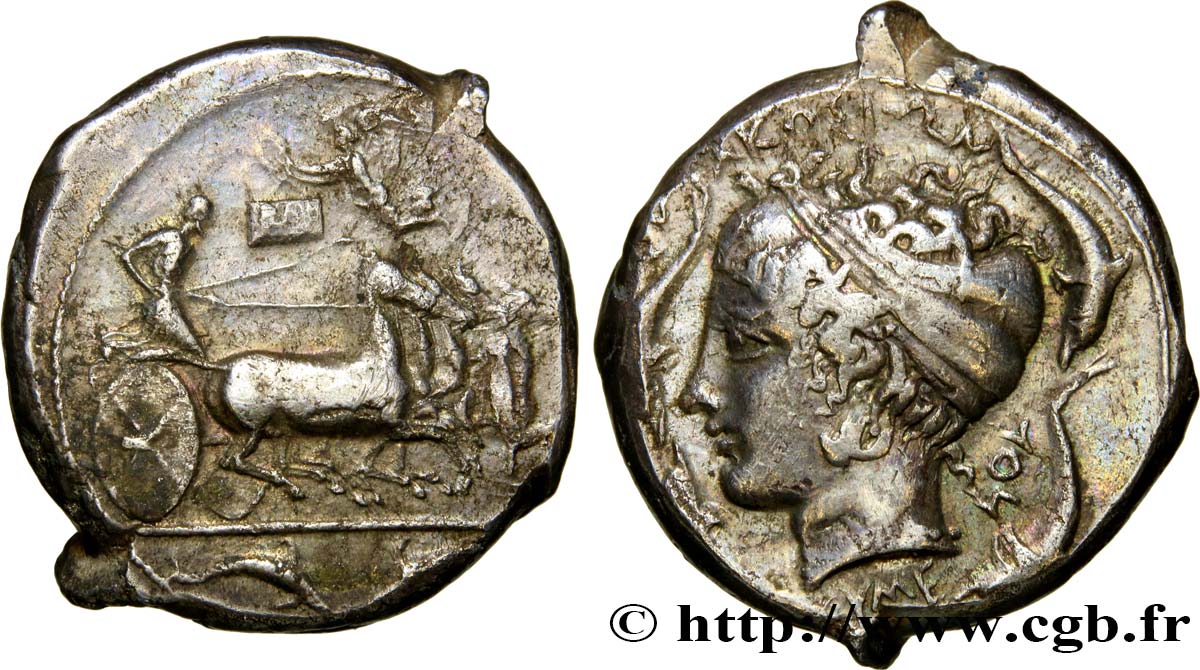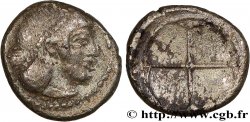Live auction - bgr_403651 - SICILY - SYRACUSE Tétradrachme
You must signin and be an approved bidder to bid, LOGIN TO BID. Accounts are subject to approval and the approval process takes place within 48 hours. Do not wait until the day a sale closes to register. Clicking on "BID" constitutes acceptance of the terms of use of cgb.fr private live auctions.
Bids must be placed in whole Euro amounts only. The sale will start closing at the time stated on the item description; any bids received at the site after the closing time will not be executed. Transmission times may vary and bids could be rejected if you wait until the last second. For further information check the Live auction FAQ
All winning bids are subject to a 18% buyer’s fee.
All winning bids are subject to a 18% buyer’s fee.
| Estimate : | 5 500 € |
| Price : | no bid |
| Maximum bid : | no bid |
| End of the sale : | 27 September 2016 14:02:59 |
Type : Tétradrachme
Date: c. 415-410 AC.
Mint name / Town : Syracusa
Metal : silver
Diameter : 26,5 mm
Orientation dies : 9 h.
Weight : 16,65 g.
Rarity : R3
Coments on the condition:
Exemplaire sur un flan ovale, bien centré avec les penons de coulée du flan bien visibles. Frappe un peu molle au droit. Très joli revers expressif. Recouvert d’une fine patine de collection ancienne
Catalogue references :
Predigree :
Cet exemplaire provient du stock de Savoca et de la collection Laurent F
Obverse
Obverse description : Quadrige galopant à droite, conduit par un aurige tenant les rênes et le kentron, couronné par une petite Niké volant à gauche ; au milieu, une petite tablette inscrite ; à l’exergue, deux petits dauphins affrontés .
Obverse legend : EUE
Obverse translation : (Euthydemos).
Reverse
Reverse description : Tête d'Aréthuse à gauche, les cheveux relevés en arrière, ornés d’un épi de blé, retenus par un ampyx et un sphendoné ; collier et boucles d’oreille.
Reverse legend : SURAKOSION// EUME/NOU
Reverse translation : (de Syracuse/ Eumène).
Commentary
Tétradrachme signé Evainète et Eumènes. Mêmes coins que l’exemplaire de l’American Numismatic Society (ANS. 272) et que celui de la collection Gulbenkian (n° 278). Cet exemplaire, une œuvre majeure de l’art grec classique est réalisée par deux artistes qui maîtrisent parfaitement l’art de la gravure monétaire : Evainète et Eumènes.








 Report a mistake
Report a mistake Print the page
Print the page Share my selection
Share my selection Ask a question
Ask a question Consign / sell
Consign / sell
 Full data
Full data









